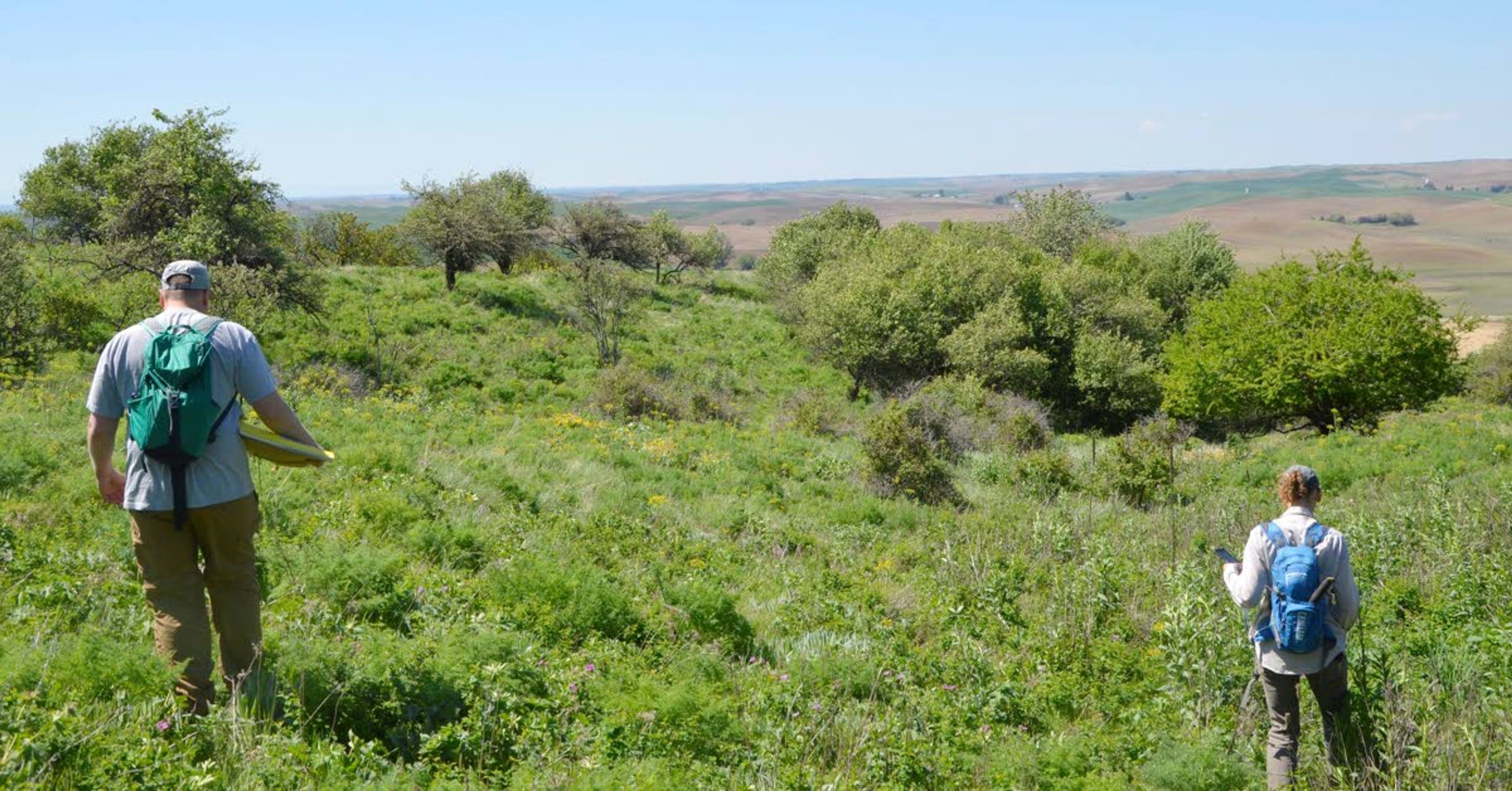Palouse Prairie preservation moves closer
Washington agency eyes purchase of flanks of Steptoe Butte to save vanishing landscape
Steptoe Butte, the most prominent landmark on the Palouse that is home to one of the largest remaining parcels of native Palouse Prairie, is one step closer to being protected as public property.
The top of the butte is already a Washington state park. Now a 437-acre parcel on the flanks of the butte may be purchased and managed to preserve its natural state by the Washington Department of Natural Resources. The Washington Recreation and Conservation Office recently awarded a $1.2 million grant to the state agency to purchase the land now owned by Kent Bassett of Bellevue, Wash., and Ray and Joan Fowlell of Pullman.
Bassett and his late wife, Elaine, teamed up with the Fowlells to purchase the property at auction in 2016. Since the purchase, the couples have advocated selling to a state agency that could properly manage the land to preserve its ecological and botanical values.
“The biological value is truly worth preserving,” Bassett said.
He recently accompanied a team of botanists from Brigham Young University on a collecting trip to the property. He said their enthusiasm and wonder at the diversity of plant and insect species thriving in the undisturbed land was infectious.
“It remains a great site for people interested in such things,” he said. “It was very evident that in their opinion it’s just a magical place. There is hardly any of this stuff left anywhere.”
Native prairie once blanketed the Palouse region. But it has largely been plowed under during the past 150 years or so and converted to agricultural land. Only a few, scattered and small parcels remains. The property on Steptoe Butte is one of the largest and most ecologically intact.
Bassett wants to see it remain that way. He and the other owners are now waiting for officials from the Department of Natural Resources to complete the public process needed to make a formal offer. That includes completing a contract between the department and the Recreation and Conservation Office formally transferring the money that ultimately came from the Washington state Legislature. The $1.2 million grant is part of $85 million legislators set aside for various recreation and conservation projects across the state.
John Gamon, natural heritage conservation section manager for the natural resources department at Olympia, said the agency will eventually have the land appraised. By law, the state can only offer a fair market price for the property. It must also reach terms that are agreeable to the current owners. Bassett wants the state to come up with an adequate plan to treat and prevent invasive weeds at the site.
Gamon said if the agency acquires the property it will be managed either as a natural area preserve, a natural resources conservation area or some combination of both. The first is more restrictive, with a focus on research and education. Access is allowed, but activities like hunting are rare. The second would allow more access and be less restrictive, but still have a priority of conserving ecological values.
“We don’t envision making that decision until we have actually acquired the property, assuming we do acquire the property,” he said.
Gamon said the decision-making process will be open to public comment.
Botanist Richard Old of Pullman has been doing a plant inventory on the property and trying to keep out weeds. He is recruiting volunteers to help with weed control. Those interested in helping can contact Old at rold@pullman.com.
Barker may be contacted at ebarker@lmtribune.com or at (208) 848-2273. Follow him on Twitter @ezebarker.











